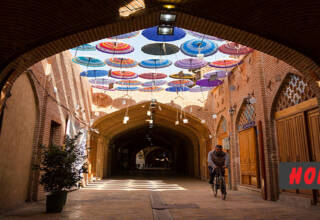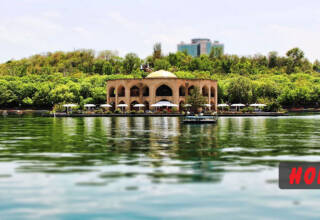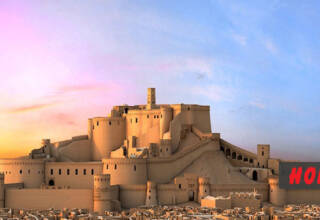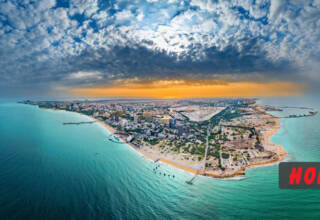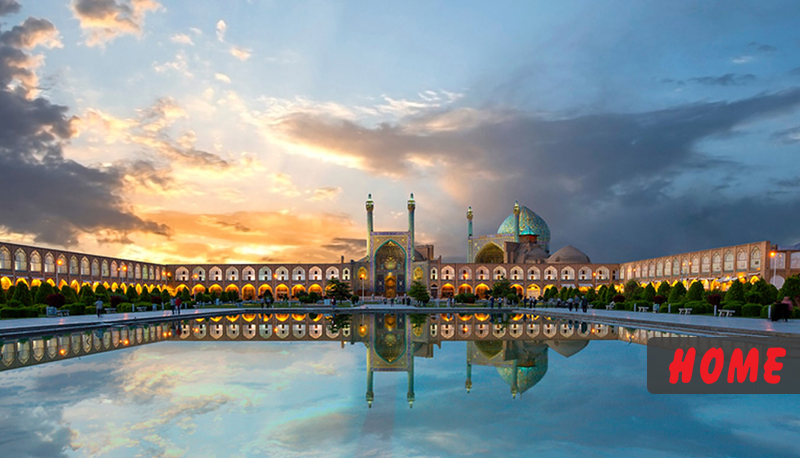
Due to its strategic location, Isfahan was an important military center in ancient Persia and some believe its name derives from the Pahlavi ‘Aspahan’ meaning ‘place of the army’. Later, the city was chosen as the capital of the Safavid (1501-1736) dynasty and became a place where various cultures and nationalities met and merged.
During its golden age in the 17th Century, this city was considered bigger than London, more cosmopolitan than Paris, and grander than the fabled Istanbul.
Isfahan on Map
Known as the City of Turquoise Domes for its beautiful mosques, which sparkled like gems along the Silk Road, Isfahan was where Islamic architecture achieved excellence and influenced the design of mosques throughout Asia.
During his reign, Shah Abbas I (1571-1629) built 999 caravanserais throughout the century one of which is said to be the 300-year-old Abbasi Hotel. This traditional lodging with its palatial proportions, unique design and delightful garden is the most famous of hotels in Isfahan and Iran.
This city may be known for its striking boulevards, bridges, magnificent palaces, beautiful churches but its glory is not limited to countless historical sites. The river flowing through the heart of the city, like many world capitals, has created a rich cultural hub where one can grasp the true feeling of the Persian way of life.
Like the architecture of the city, Isfahan rugs have world reputation. These rugs with their silk wraps and cotton or wool wefts are densely knotted and have designs inspired by the tilework of Isfahan mosques. One of the most precious Persian carpets from this city is the ‘Oneness of Mankind’ by Mohammad Seirafian which adorms the UN Headquarters in New York.
Among the cities of Iran, Isfahan has the greatest number of UNESCO World Heritage Sites and therefore it is not surprising that it carries the nickname “Half of the World”.
This charming city, the third largest in Iran, has a thriving Armenian quarter with a maze of cobblestoned streets and inviting cafes situated around the old churches of Jolfa.
Tripp Plans
- 1st day: Naqsh-e Jahan Square, Imam’s Mosque, Sheikh Lotfollah Mosque, Ali Qapu Mansion, QeySarieh bazar, Chehel-Soton Palace, Natural History and Wildlife Museum, Qazvini’s House, Siyo-se-Pol bridge.
- 2nd day: The Hasht Behesht Palace and Park, Chahar Bagh Ave, Vank Church, Bethlehem Church, Hacop Church, Holy Mary Church, Holy Georg Church, Flower Garden (Bagh-e Golha), Mount Soffeh
- 3rd day: Nazhvan Forest Park, Bird Garden, Reptile Garden, Aquarium Tunnel, Monar Jonban, or Menar-e-jomban (Shaking Minarets), Fire Camp
Top Hotels
| Name | Stars | Address | Tel |
| Abbasi | Five Star | Amadegah St., Isfahan | +98 31 3222 6010 |
| Attar | Five Star | 19th Alley, Masjed Seyyed St., Isfahan | +98 31 33386128 |
| Ali Qapu | Four Star | Chahar Bagh Abbasi, Isfahan | +98 31 3222 7929 |
| Piroozi | Four Star | Chahar Bagh Abbasi, Isfahan | +98 31 3221 4354 |

Top Restaurants
- Shahrzad Restaurant: Middle Eastern, Persian, Vegetarian
- Beryani Azam Restaurant: Persian
- Emarat Namakdan Cafe: Café, Persian
- Hermes Restaurant & Cafe: Italian, Pizza, European
- Sharbat Khaneh Firuz: Café, Middle Eastern, Persian
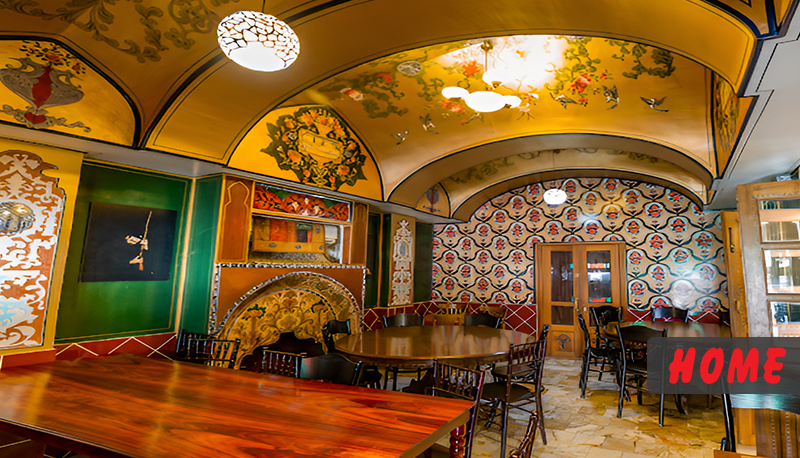
What to do in Isfahan?
- Climb Soffeh Mountain (2257m) 8 km south of the city or catch a tele cabin up for 120,000 Tomans. Just walk around the park (with plastic pre-historic animals) is another option or go bowling at one of the bowling allies underneath the tele cabin station. From the park entrance it is 3 km to the top. The elevation difference is about 400 m. Only the very last part of the trail requires some scrambling over rocks. To get to the park take a bus from Soffeh terminal, take a taxi or walk.
- Cycle or walk along the beautiful Zayandeh-Roud river and enjoy well maintained parks and historic bridges on the way. You can get a bicycle free of charge at the old city bus station. You have to leave an ID card or passport.
- Enjoy a horse-drawn carriage ride in the historic Naqsh-e Jahan square.
- Have a picnic in Nazhvan garden and enjoy the scenery
- A walk in Chahar-Bagh Street while enjoying Persian saffron ice-cream
- Take a day trip to Kashan and Qamsar, especially during the months that local Rosewater production is underway in Qamsar.
How to Get There
- Airplane: International Airport of Shahid Beheshti of Isfahan
- Bus: Isfahan Soffeh bus terminal- Kaveh Bus Terminal- Jey Terminal
- Train: Isfahan province has joined the national railway network due to the significant industrial and economic potential in 1968. It has a mission to supply raw materials and distribute industrial production in the province. The main line of Isfahan railway composed of 709 km.
- Metro: Metro is one of the best and most popular transportation means around the world. Isfahan Metro, in addition to its inter-city coverage, also connects some of the surrounding cities to Isfahan. Currently, the Isfahan subway has three railway lines.
